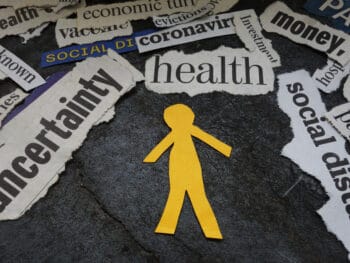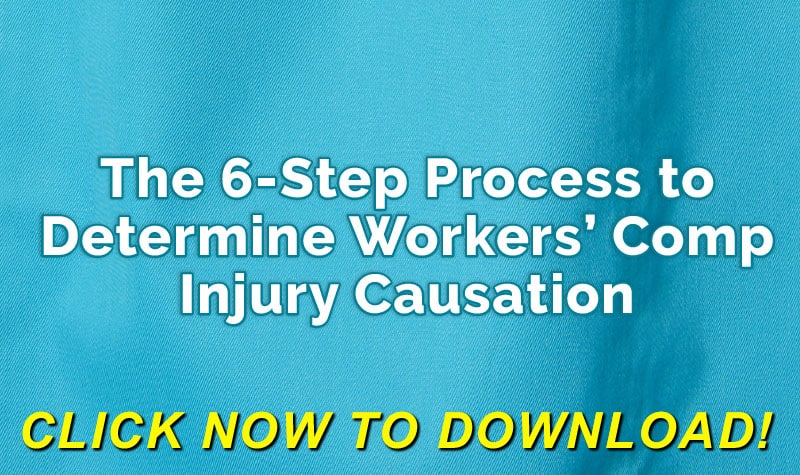
The Coronavirus pandemic sweeping the globe will cause members of the claim management team to face a new challenge beyond staying healthy themselves. It will likely cause added stress on the system as employees claim workers’ compensation benefits for illnesses that will cause countless people to miss work. Now is the time to educate yourself and interested stakeholders on the compensability to diseases of ordinary life, and the ramifications of these conditions on the workers’ compensation system.
What is Coronavirus?
“Coronavirus” is a generic term for viruses that impact the respiratory tract of humans and other mammals. Other related illnesses are referred to as Severe Acute Respiratory Syndrome (SARS), which sparked fears in China back in 2002-03, Middle East respiratory syndrome (MERS), which made headlines several years ago, and H1N1, which is an Influenza A virus subtype.
The current flu strain making headlines is formally called “COVID-19.” This is a respiratory infection first detected in China. It is transmitted via respiratory droplets in the airways and is commonly transmitted during a cough or sneeze.
Click Link to Access Free PDF Download
“The 6-Step Process To Determine Workers’ Comp Injury Causation”
A new special report from Broadspire on The Workers’ Compensation Impacts of 2019 Coronavirus states, “Multiple strains of COVID-19 have been identified, but the impacts on humans, even within a specific strain, are inconsistent. The described symptoms of COVID-19 vary between a mild upper respiratory infection and severe pneumonia, which could lead to death.”
Regularly updated guidance from the WHO can be found here: https://www.who.int/emergencies/diseases/novelcoronavirus-2019
COVID-19 and Work Comp
The fear of this new disease and the unknown is driving the shock value across social media and the news. While it is no fun to get sick, the disease appears to only have a significant health impact on the elderly or those with respiratory conditions such as asthma. It is important to note, this is also true for anyone who contracts more common Influenza A (“the flu”) virus subtypes. Proactive approaches such as hand washing, good hygiene, and properly “covering” your cough/sneeze can prevent infection at home and workplace.
This is also causing many to ask whether the contraction of this new virus is compensable under a workers’ compensation act. The answer is – it depends.
Compensability of Ordinary Diseases of Life
When reviewing the compensability of any workplace injury, illness, or exposure, it is important to remember that two general elements:
- Whether the injury/illness “arose out of” the employee’s employment; and
- Whether it was “in the course of” employment.
Unless there is a rebuttable presumption, the employee must meet their burden of proof.
Courts, in many instances, have been hesitant to find a workplace illness to be compensable when the condition is deemed an “ordinary disease of life.” This is mainly due to factors including the ability of the employee to demonstrate the workplace created an “increased risk.” Even when analyzing a case under a “positional risk” doctrine that is not as rigorous, the ill employee is often left with the difficult task of proving causation – even in instances where a co-worker in close proximity is sick.
Courts, in more extreme instances, have been willing to examine unique factors to illness and sustain an action for workers’ compensation benefits. One case in point is Olson v. Executive Travel MSP, 437 N.W.2d 645 (Minn. 1989). In Olson, the employee was involved in work-related travel to Asia, where she developed bilateral staphylococcal pneumonia. As a result of this condition, she had several episodes of acute respiratory failure that resulted in permanent chronic bronchiectasis. The employer and insurer denied primary liability, but a compensation judge disagreed. This decision was affirmed on appeal. Central to the finding of the compensation judge was a finding that the employee “was in the Orient (Asia) because of her employment, became infected by a specific virus that was at that time nor present in the United States.” Because the virus that infected the employee resulted in permanent disability, the employee’s claim was compensable.
Making Claims Decisions Related to COVID-19
While Olson is not dispositive on jurisdictions beyond Minnesota, it can give guidance to claims professionals as they confront workers’ compensation claims involving COVID-19.
- Claims made by police, firefighters, and EMTs are subject to “rebuttable presumptions” in many instances. It is important to retrace the steps taken by this group of employees and understand who they came in contact with during the course of their employment;
- Doctors, nurses, and other health care professionals would have a higher likelihood for compensable claims given their roles within the healthcare system. However, as stated in Broadspire’s report states, “the ability to assess where the exposure took place is difficult, and as the disease spreads the exposure outside of employment, the burden of proof is placed on the employee.” It would be important to examine reported instances of exposure with patients at the facilities employing these employees. An investigation should also be made with other outside persons who may have contracted COVID-19 prior to the employee becoming sick; and
- Other employees – likely not compensable. COVID-19 is now inside the United States and is not “unique” to one part of the world. Risk can be mitigated by working with clients to encourage a safe workplace. This includes rigorous cleaning in common areas, instruction on basic sanitation such as the washing of hands, and having sick employees stay home.
Conclusions
As stated in Broadspire’s report, “Usually, the flu and other infectious diseases are not covered or accepted under workers’ compensation.” However, COVID-19 is a dangerous virus that needs to be taken seriously. Employers, insurance carriers, and other interested stakeholders should use this as an opportunity to educate people on proper hygiene. It should also reinforce rigorous investigative techniques if claims are made related to this virus. Understanding case law and its interpretations are also required.

Contact: mstack@reduceyourworkerscomp.com.
Workers’ Comp Roundup Blog: https://blog.reduceyourworkerscomp.com/
©2020 Amaxx LLC. All rights reserved under International Copyright Law.
Do not use this information without independent verification. All state laws vary. You should consult with your insurance broker, attorney, or qualified professional.













 4 Part Framework to Communicate About Coronavirus
4 Part Framework to Communicate About Coronavirus
